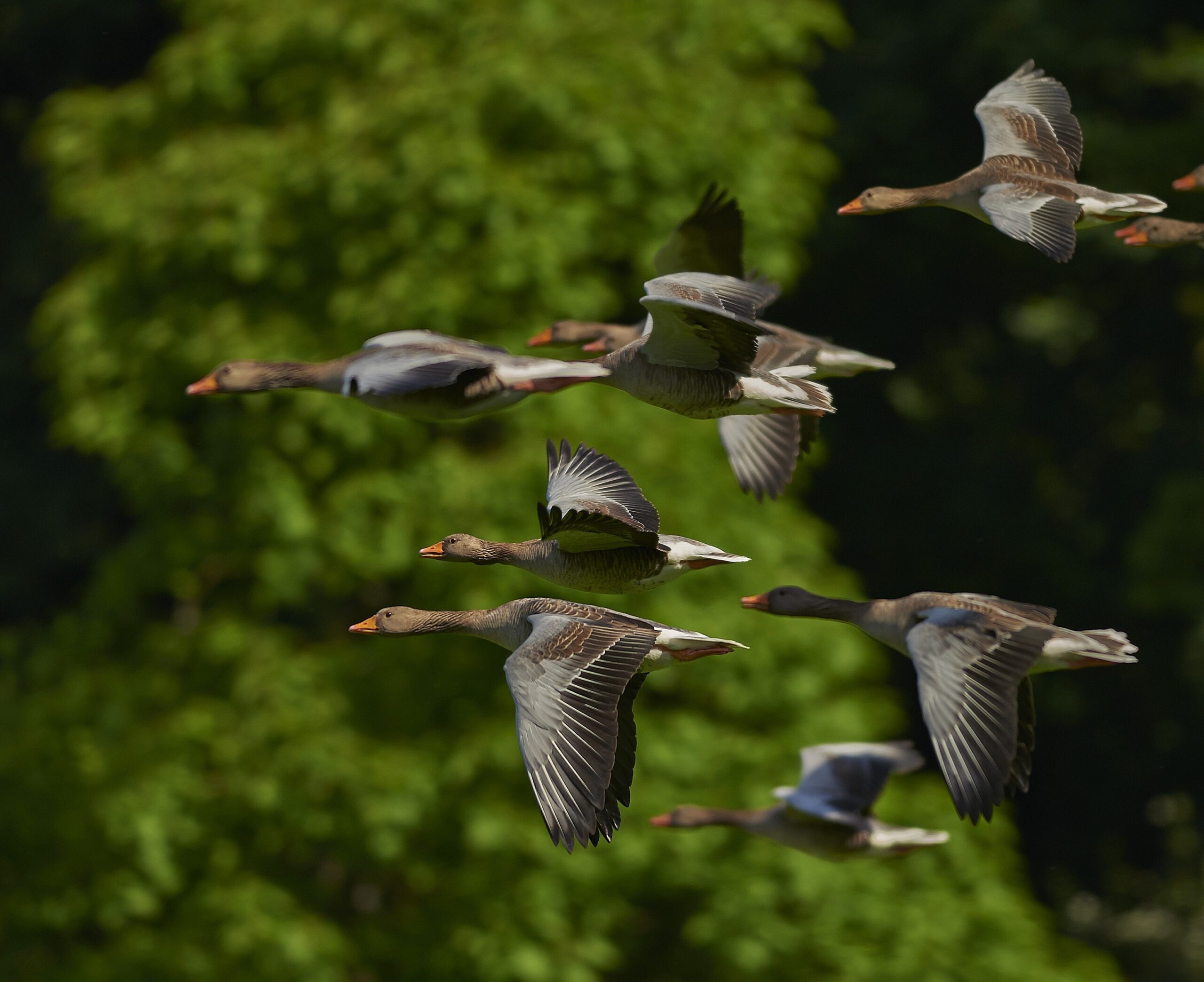
31 Oct Avian Flu Outbreaks Highlight the Urgent Need for PPE & Shoe Covers
In 2025, renewed waves of H5N1 avian influenza outbreaks across United States poultry farms, wild bird populations, and even dairy operations underscore a critical need: the implementation of proactive personal protective equipment (PPE) protocols and the use of effective shoe covers for bird owners, rescue centers, and farm staff. As bird flu continues to circulate silently among wild birds, the risk of introducing it into captive flocks or spreading it between facilities is very real.
In this blog, we’ll examine the current U.S. avian influenza outlook, how the virus spreads, what farms and rescues are doing right now, and why shoe covers for avian flu are a smart, low-cost defense.
What’s Going On With Avian Influenza in the U.S.?
As of mid-2025, the Centers for Disease Control & Prevention (CDC) notes that H5 bird flu is widespread in wild birds globally and continues to cause outbreaks in poultry and dairy settings in the U.S. While the public health risk remains low, health authorities are closely monitoring individuals who have had close animal exposure.
An increase in activity in recent months signifies that the 2025 – 2026 avian influenza “season” is underway:
- From the beginning of September to the start of October 2025, 38 U.S. flocks (including 24 commercial and 14 backyard) have been confirmed with highly pathogenic avian influenza (HPAI), and an estimated 4.4 million birds were affected.¹
- On October 14, 2025, in Minnesota, three commercial turkey flocks and two in Utah tested positive for HPAI, affecting tens of thousands of birds.²
- In Jefferson County, Wisconsin, two poultry flocks tested positive in October, with experts emphasizing that this particular instance is part of an ongoing outbreak traced back to 2022.³
According to the Pan American Health Organization, there have been 5,063 outbreaks of avian influenza A (H5N1) documented in the Americas region since 2022. Additionally, from 2022 through October 14, 2025, there have been 76 human infections caused by avian influenza A, resulting in two deaths, indicating that while human infection is rare, it can be severe.
What does all of this mean? Anyone managing birds, whether commercially, in a rescue, or in a backyard setting, must assume risk is present and act accordingly. Many wild birds carry this virus silently, making it extremely difficult to contain early; therefore, proactive action is necessary to protect birds and others.
Bird Rescues & Farms Are Taking Extra Precautions
Across the U.S., bird rescues, wildlife centers, and poultry farms are tightening biosecurity in response to these renewed threats.
- In California, rescue groups have implemented complete PPE protocols, including the use of shoe covers, for all staff working with infected or exposed birds, as well as those who visit the location.⁴
- In Pennsylvania, a $25 million assistance package for poultry farmers was announced, and at the press event, all attendees wore white shoe covers and had their cars disinfected to help prevent potential spread.⁵
- For dairy farms, workers are at a high risk of exposure to bird flu due to direct contact with potentially contaminated fluids, such as raw milk. By the end of 2024, close to 700 dairy cattle herds will have been infected with the bird flu, and the majority of human infection cases will have occurred after contact with dairy cattle.⁶
The Occupational Safety and Health Administration (OSHA) requires any workplace that has a high risk of exposure to avian influenza to provide employees with PPE and keep records on infected animals and humans.⁷ Unfortunately, OSHA’s requirements are not enforced on farms with fewer than 11 employees, making it crucial for smaller operations to implement these safety requirements independently.
All of these safety measures illustrate a critical point: it’s better to prevent spread than respond after an outbreak. Having protocols in place before a crisis is essential.
How the Virus Spreads
Understanding the pathways of avian influenza⁸ helps clarify why shoe covers are so effective in a layered defense strategy.
- The virus is shed in feces, saliva, and respiratory secretions of infected birds.
- Virus particles can survive on surfaces, equipment, clothing, and footwear for hours to days, depending on conditions.
- In many cases, wild birds carry H5N1 asymptomatically, meaning there are no obvious signs until the virus reaches domestic bird flocks.
- Shoes act as inadvertent “fomites,” meaning they can track contaminated material, such as mud, droppings, or litter, from one location to another, introducing the virus into otherwise clean zones.
On a poultry farm or bird rescue, moving between zones (say, from quarantine pens to aviaries) without changing footwear or using protective barriers is a classic transformation risk.
Many bird flu outbreaks cluster seasonally, typically in fall and spring, when birds migrate, the chance of inadvertent spread via human movement is increased. Because of this, stopping contaminants at the door becomes a smart, fundamental step.
Why Shoe Covers Are Crucial for Avian Flu Protection
Stop Contaminants at the Door
Shoe covers provide a physical barrier against virus particles that might adhere to shoes. Here’s how they help:
- Intercept particles: As staff walk through contaminated areas, like muddy runways, bedding, or near outdoor wild bird zones, the outer surface of a shoe cover captures virus-laden debris before it reaches the underlying shoe.
- Containment: Because the covers are single-use, you can remove them before entering clean zones, avoiding carryover contamination.
- Zoned protection: When used in conjunction with a shoe cover dispenser at entry points and a shoe cover removal station at exit points, they enforce a clean/dirty separation that also keeps hands clean.
- Complement other PPE: Shoe covers act as a complement to gowns, gloves, boot scrubbers, indirectly vented safety goggles, and proper hand hygiene. Even with the best PPE, if you aren’t using shoe covers, their impact is minimal due to how easily shoes track in the virus.
Affordable & Easy to Use
- Low cost per unit: Compared to the costs of an outbreak, the per-unit cost of disposable shoe covers is minor.
- Minimal training: Staff can be trained to apply and remove covers quickly with minimal error. Shoe Cover Magic’s dispensers and removers are designed to make them easy for anyone to use.
- Fast throughput: Automated dispensers and removal systems reduce workflow delays.
- Clear compliance: Visual cues via signage or color-coded shoe covers reinforce adherence.
- Scalable: Whether you have a small rescue setup or a commercial farm, scaling the volume of shoe covers is straightforward, and our dispenser and removers are designed to accommodate operations from small to large.
Common Questions About Avian Flu & PPE
Can humans get bird flu from pet birds?
Yes, though it is rare. Most documented human cases have involved close, prolonged contact with infected birds or contaminated environments, typically resulting from interactions with wild birds.
How often should shoe covers be changed?
At every transition from “dirty” to “clean” zones, individuals should ideally use a fresh pair each time they exit a high-risk area. If walking through heavy contamination, change the shoe covers more frequently.
What PPE should I use if I own birds?
Use a combination of gloves, coveralls or gowns, eye or face protection, and shoe covers. Disinfect equipment and practice strict zone control to keep clean and dirty areas separated.
Protect Your Birds & Yourself With Shoe Cover Magic
The risk from H5N1 is not hypothetical. With tens of millions of birds already affected and new outbreaks occurring right now, proactive mitigation is vital. As a trusted provider of shoe cover solutions for the avian industry, Shoe Cover Magic is ready to support your biosecurity needs.
Contact our team to request a complimentary sample for testing in your specific workflow. When ready, we can assist you in placing a bulk order for your facility or rescue center, including configuring a shoe cover station workflow that aligns with your specific layout and needs.
In the fight against avian influenza, every barrier counts, even beneath your feet. Contact us today to get started.
Source Citations
- ¹ Center for Infectious Disease Research and Policy (CIDRAP). “Flurry of H5N1 Activity Noted in Commercial Poultry, Wild Birds.” https://www.cidrap.umn.edu/avian-influenza-bird-flu/flurry-h5n1-activity-noted-commercial-poultry-wild-birds. Accessed October 2025.
- ² University of Nebraska Medical Center – Global Center for Health Security. “More HPAI Reported in Minnesota, Utah, British Columbia.” https://www.unmc.edu/healthsecurity/transmission/2025/10/15/more-hpai-reported-in-minnesota-utah-british-columbia/. Accessed October 2025.
- ³ NBC15 News (Madison, WI). “Bird Flu Detections in Jefferson County Part of Years-Long Outbreak, Experts Say.” https://www.wmtv15news.com/2025/10/16/bird-flu-detections-jefferson-county-part-years-long-outbreak-experts-say/. Accessed October 2025.
- ⁴ The Press Democrat. “Bird Lovers Instituting Safety Measures in Face of Avian Flu.” August 3, 2022. https://www.pressdemocrat.com/2022/08/03/benefield-bird-lovers-instituting-safety-measures-in-face-of-avian-flu/. Accessed October 2025.
- ⁵ WFMZ-TV (Pennsylvania). “Pennsylvania Announces $25 Million to Help Poultry Farmers Affected by Bird Flu.” https://www.wfmz.com/news/area/pennsylvania/pennsylvania-announces-25m-to-help-poultry-farmers-affected-by-bird-flu/article_22e127d4-0dcc-11ed-97d9-e76b5393115b.html. Accessed October 2025.
- ⁶ Investigate Midwest. “Bird Flu PPE Access Remains Unequal Across Dairy-Producing States.” December 4, 2024. https://investigatemidwest.org/2024/12/04/bird-flu-ppe-access-in-dairy-producing-states/. Accessed October 2025.
- ⁷ U.S. Occupational Safety and Health Administration (OSHA). “Avian Flu: Control and Prevention.” https://www.osha.gov/avian-flu/control-prevention. Accessed October 2025.
- ⁸ U.S. Centers for Disease Control and Prevention (CDC). “How Bird Flu Spreads Between Animals and People.” https://www.cdc.gov/bird-flu/virus-transmission. Accessed October 2025.


Sorry, the comment form is closed at this time.